Countermeasures
An early experimental sample produced as part of product development undertaken in Cucula’s Kreuzberg studio by Jerszy Seymour Design Workshop and Cucula’s trainees.The design is being developed as part of an ongoing workshop programme (image: Jonas Holthaus).
For Disegno’s 10th anniversary, we’re republishing 29 stories, one from each of the journal’s back issues, selected by our founder Joahnna Agerman Ross. From Disegno #15, Jeannette Petrik and Jonas Holthaus visit Cucula, a social design programme helping refugees in Berlin.
Between October 2012 and April 2014, the Oranienplatz plaza in Kreuzberg, Berlin, was occupied by a protest camp. Initiated by around 70 refugees from a Lager (refugee camp) in Würzburg, the protest initially grew in opposition to Germany’s Residenzpflicht law, a piece of legislation requiring those with refugee status to live within certain geographical boundaries. Although the camp disbanded in 2014, its ideals have lived on through the OPlatz movement, a group that opposes the Residenzpflicht, the establishment of the Lagers and deportations of refugees under the European Union’s Dublin III regulation. Following Germany’s decision to adopt an open-door policy to refugees fleeing the civil war in Syria in 2015 – and government data showing that there were 3,533 attacks on migrants and asylum hostels in 2016 – the questions that the Oranienplatz occupation raised over the way in which society conceives of and frames social integration remain valid.
In autumn 2013, Barbara Meyer and Jutta Spychalski-Mindermann of the Schlesische 27 cultural centre invited the Oranienplatz occupiers to use their centre’s facilities. Five of the occupiers – Malik Agachi, Moussa Usuman, Maiga Chamseddine, Saidou Moussa and Ali Maiga Nouhou – joined the designer Sebastian Däschle’s furniture-making workshop, where they were invited to reproduce pieces from Enzo Mari’s Proposta per un’autoprogettazione (1974), an instruction manual for producing affordable furniture that required only pre-cut pieces of pine and nails for its assembly. Initially, the Autoprogettazione furniture was intended for use in the occupiers’ accommodation, but an idea soon emerged to sell it for the profit of its makers: refugees who, legally speaking, are not permitted to make a living. Despite Autoprogettazione never having been set up to be reproduced commercially, Mari granted permission for Däschle’s proposal in November 2015.
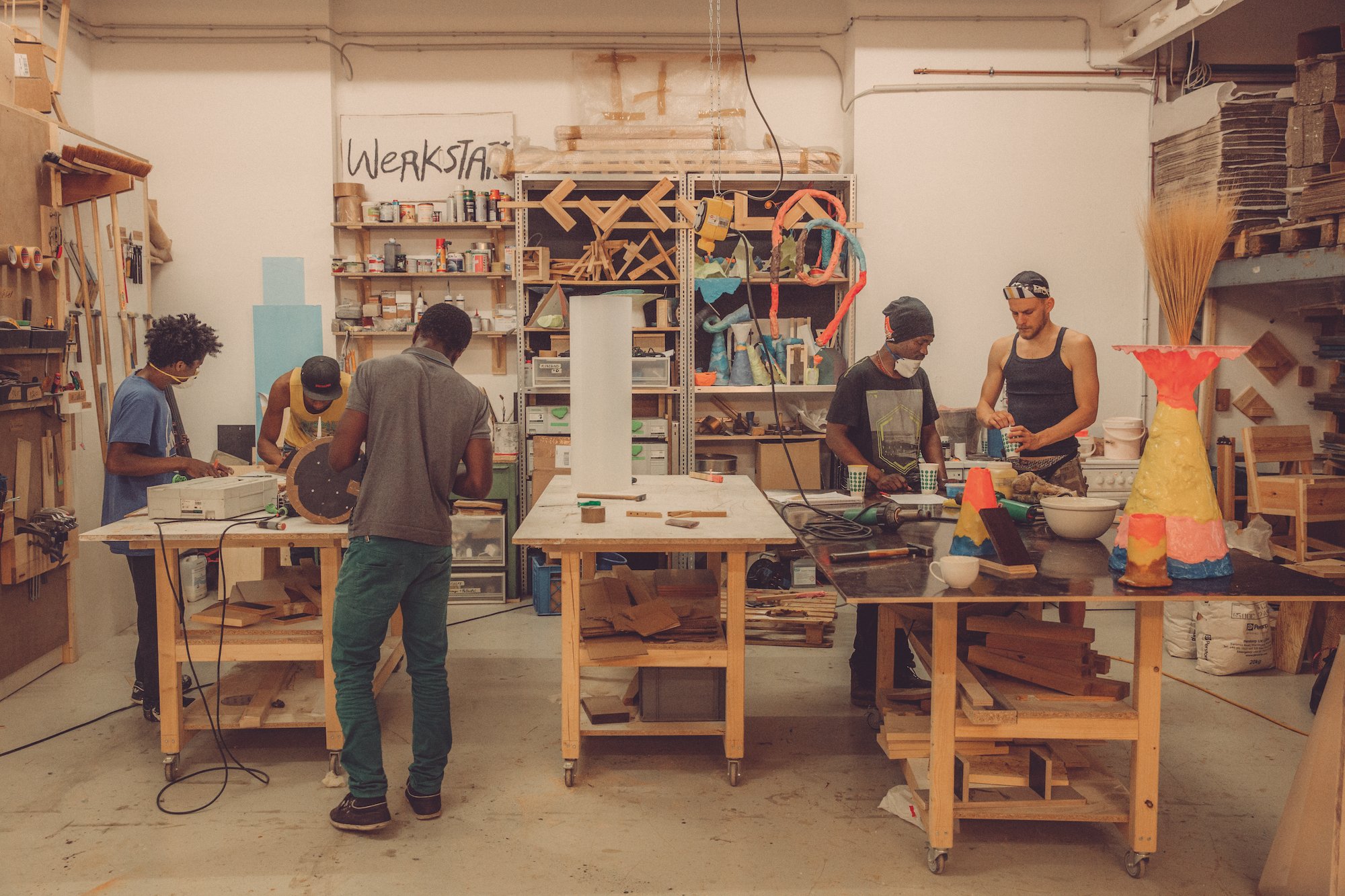
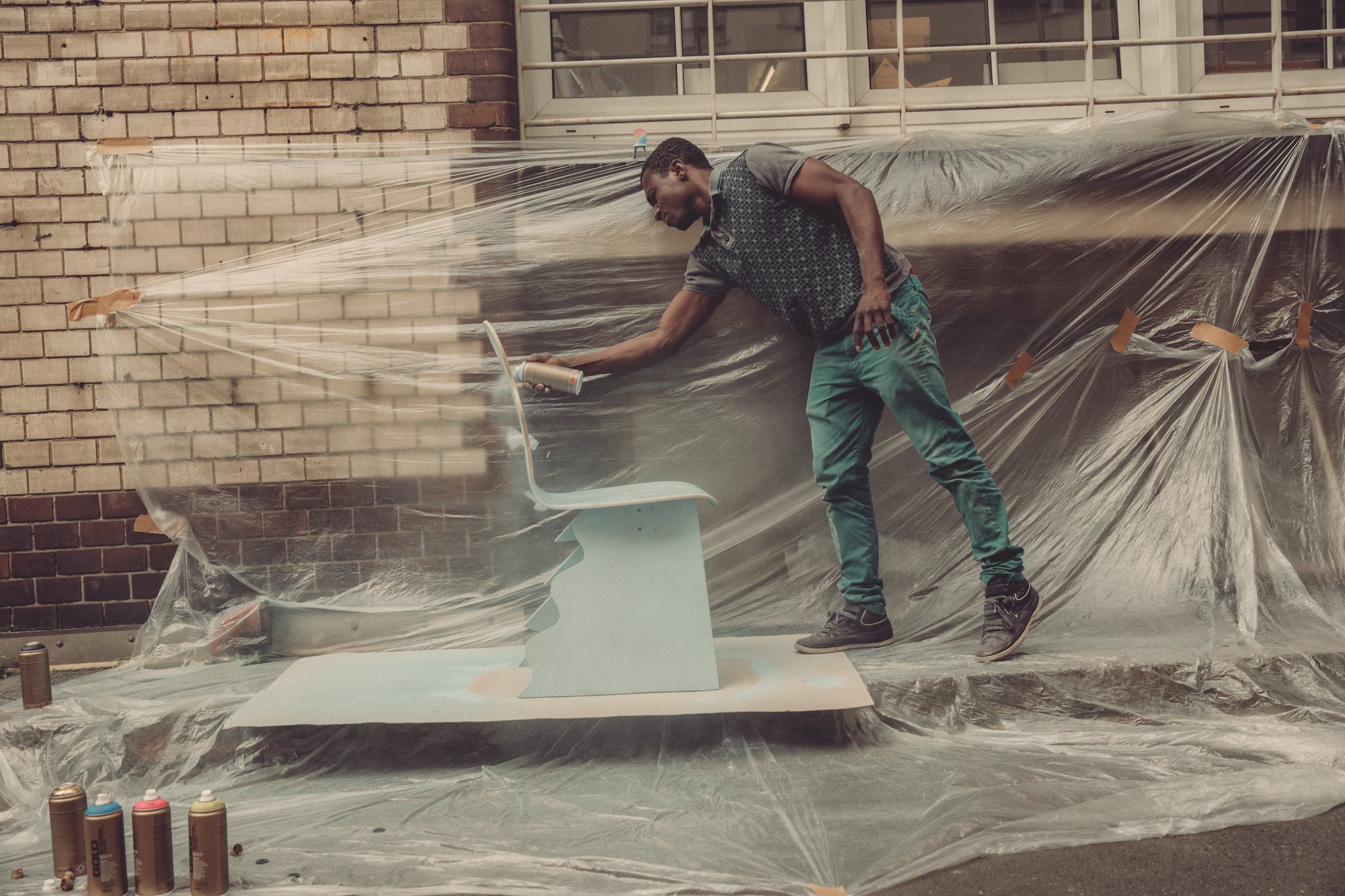
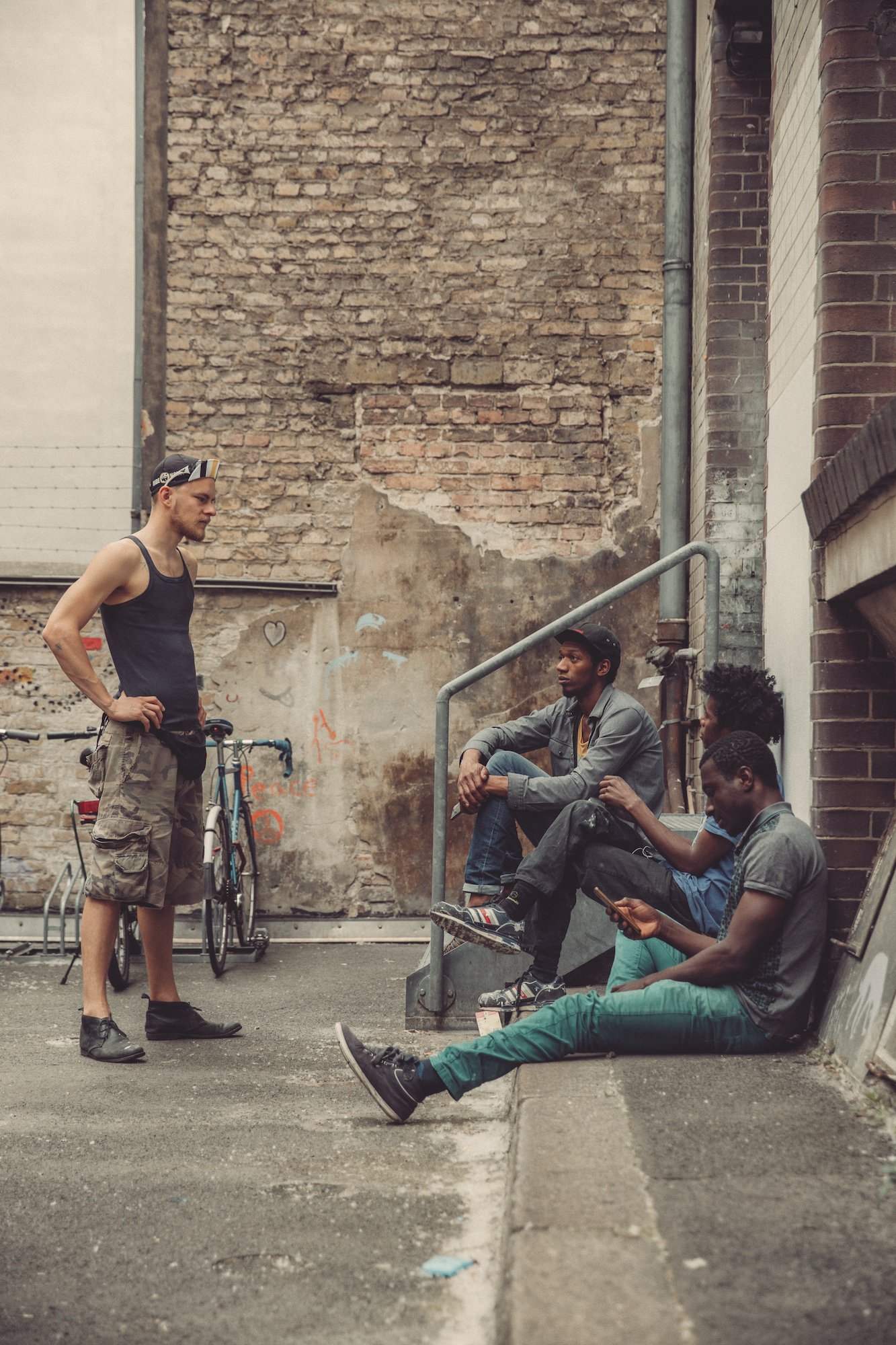
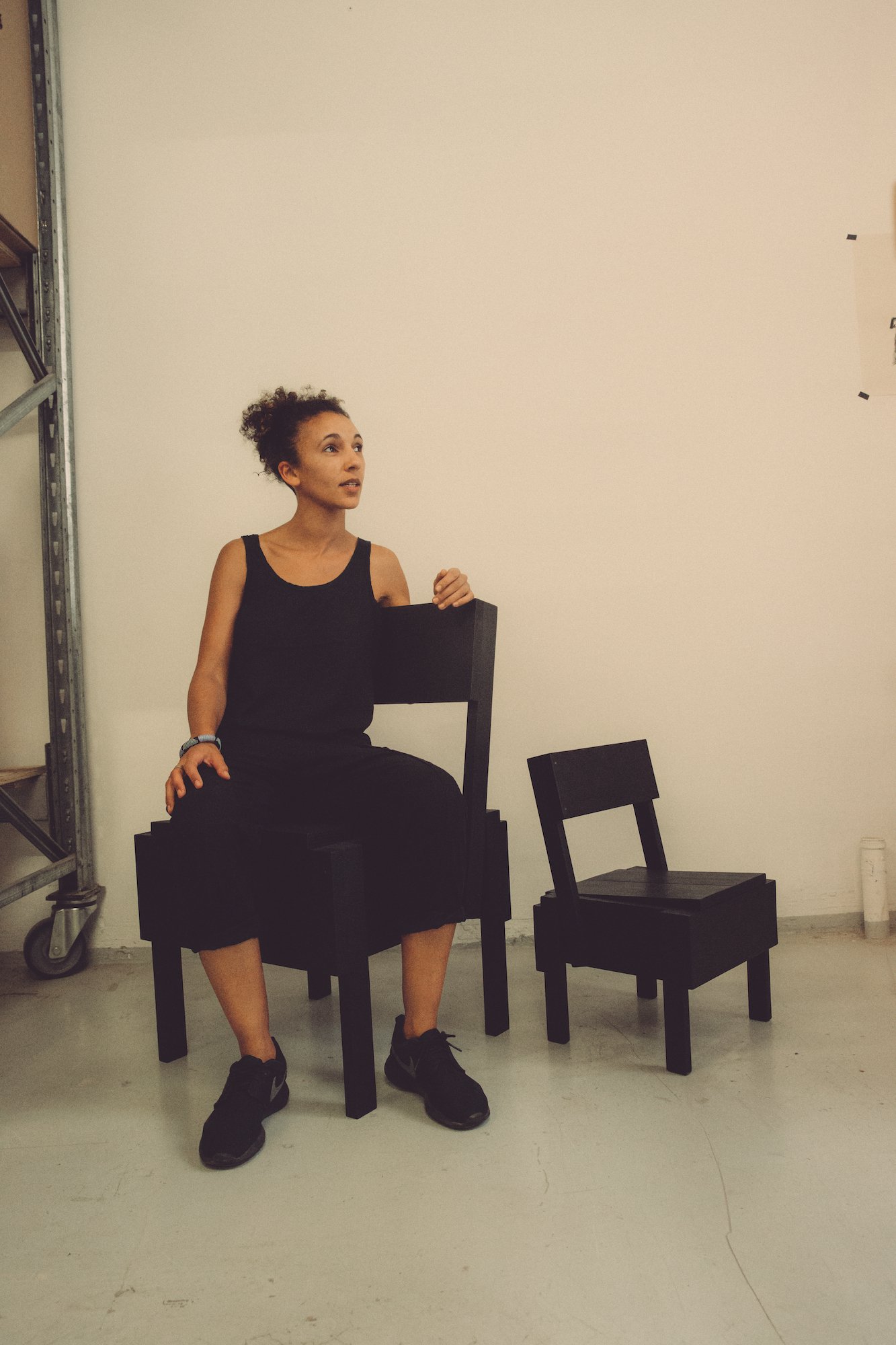
Cucula – which translates as “to do something together” from Hausa, a Chadic language spoken across much of western Africa – is the body set up to facilitate the sale of Mari’s furniture, but also a direct descendant of the Oranienplatz occupation. Founded by Däschle and Meyer in conjunction with the designer Corinna Sy and educator Jessy Medernach, the organisation was structured such that around 50 per cent of its funding derived from sales of furniture – the remainder comes from financial supporters and individual donors – but it was also intended to be more than a simple production centre. Cucula was launched as a Lernwerkstatt, a networked place of learning for both participants and organisers that operates full- and part-time traineeships for refugees in Berlin. Alongside running workshops, the organisation makes contacts with lawyers, finds housing and arranges language courses. It also pushes for work and residence permits, and fights against threats of deportation. “It’s experimental vocational preparation that gives structure as a place,” notes Sy. Yousuf Karim, a current trainee with the body, emphasises this point further. “If you have more ideas and possibilities [than others], you have to share them,” he says. “If you give money it doesn’t always mean that you solve the problem. If you give an idea, you give them a way of looking.”
Cucula has now entered a new stage in its development. In early 2017, the organisation began collaborating with the designer Jerszy Seymour on a series of workshops and programming with Cucula’s trainees. The group’s space in Kreuzberg is now peppered with ovens, pots and expanses of empty surface spaces: the apparatus required for Seymour and his team’s experiments with polycaprolactone wax, an inexpensive modelling clay-like material. The trainees and Seymour knead, roll and dye the wax, exploring its form alongside everyday objects and materials, before a phase of professionalisation of the process begins. These experimental sessions are intended to serve as initial research, with Seymour and Cucula hoping to launch a series of cooperatively designed objects on the market this year. “Everyone can make a change in their small world,” says Anoosha Khosrowpour Taleghani, one of Cucula’s trainees. “You have to make the revolution happen from where you’re at and your environment.”
A commercial product, however, is not the primary outcome of the programme: more important is the sense of self- determination inculcated by the process, and the provision of opportunities for participants to leave their status as refugees behind. “I’m not interested in furniture design,” says Seymour. “There is only one valid project in design [which] is the revolution.” Seymour speaks of a globally collective vision of an egalitarian future that gives “all people on the planet an equality of human rights and welfare, of movement, and of minimum income” and states that in order to achieve this aim state borders would need to be abolished. “As people who are interested in building a new society based on egalitarian principles, we see it as our moral duty to support [the trainees] because in doing so we support ourselves,” he says. “[Refugees] are the strongly visible victims of an unfair, unjust, neoliberal capitalist system and its history of colonialism. I think that we need to go past the idea of integration because that is about integration into the old world. What we all need is extra-gration into a new world.”
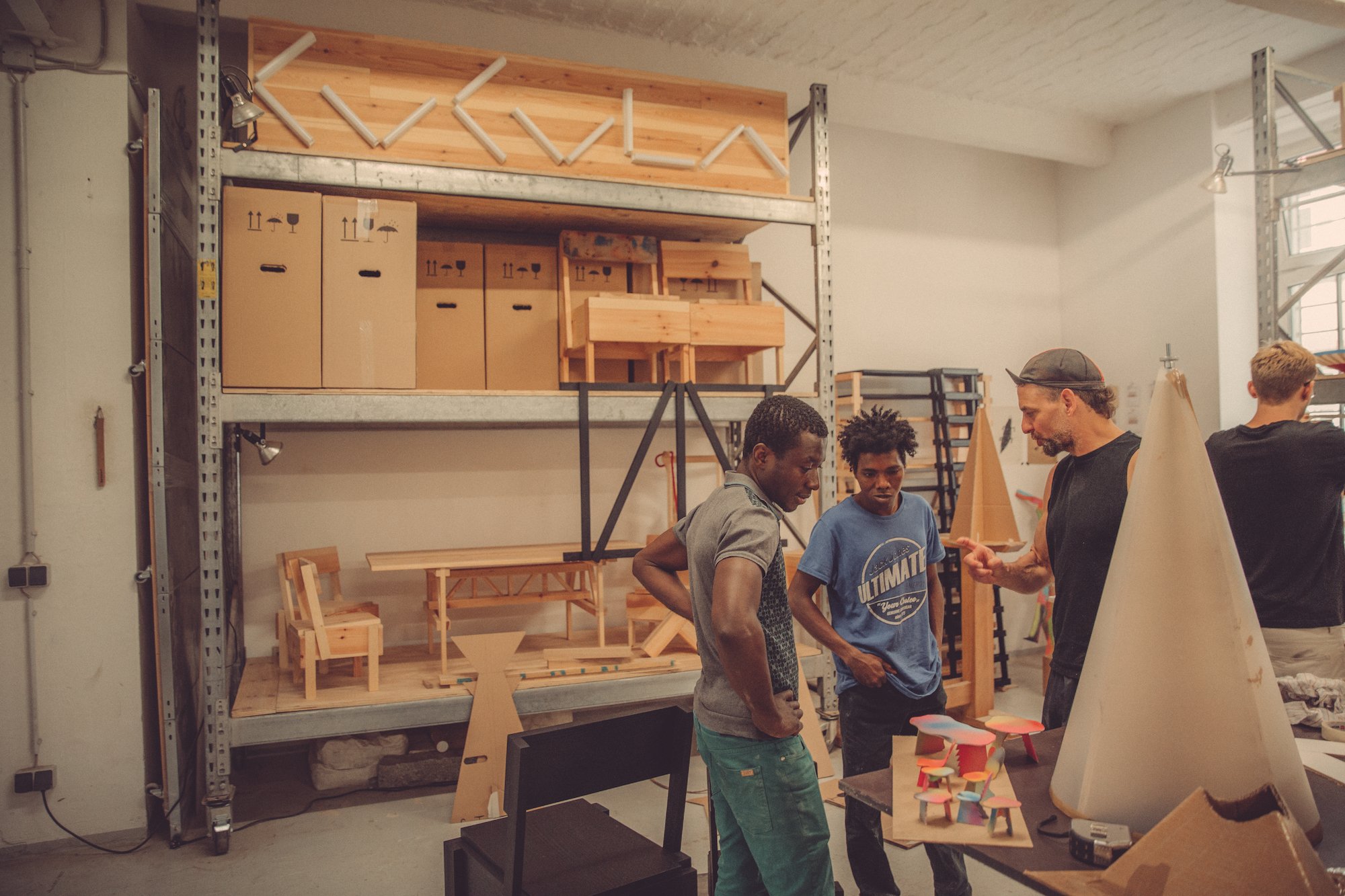
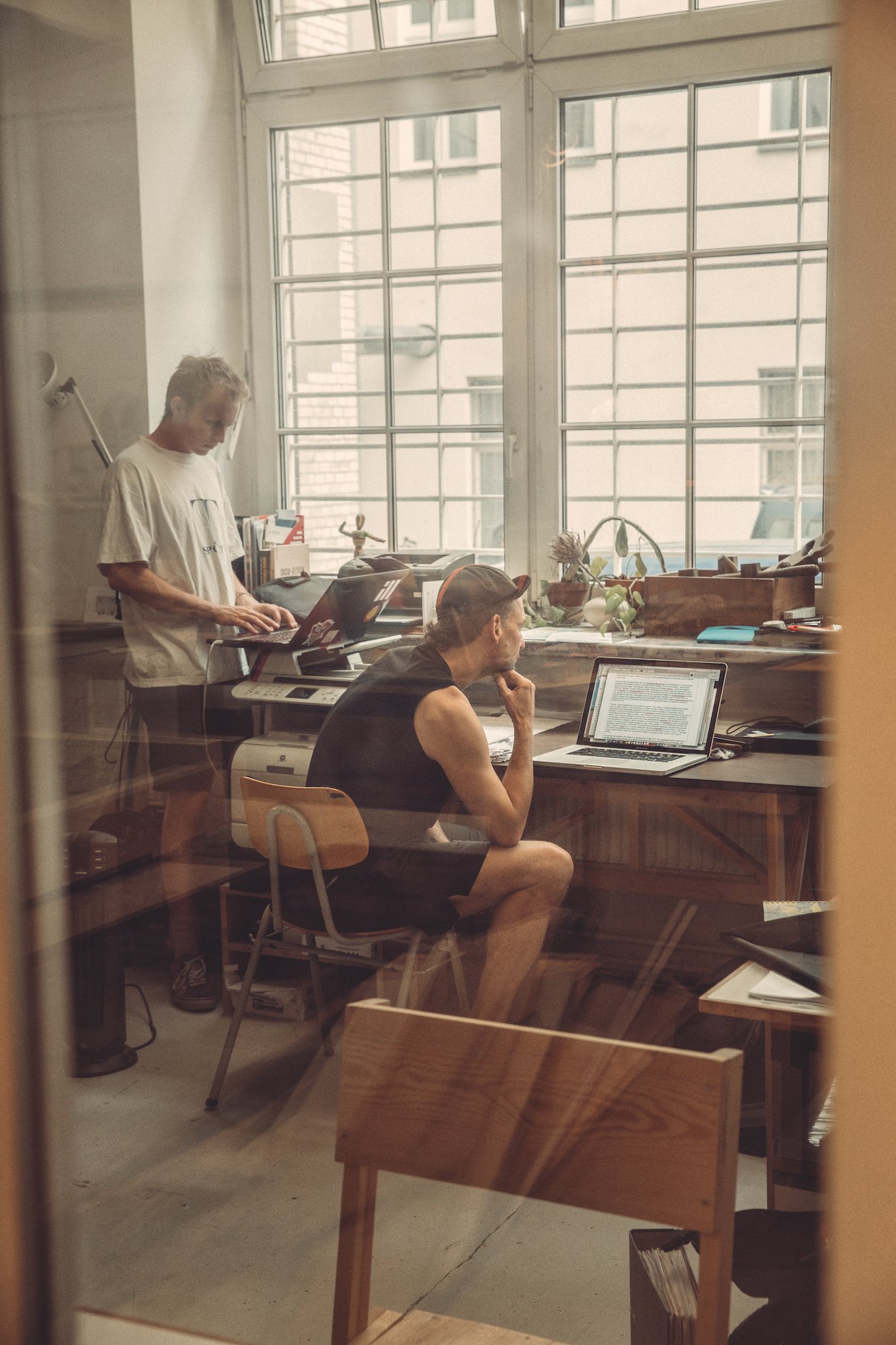
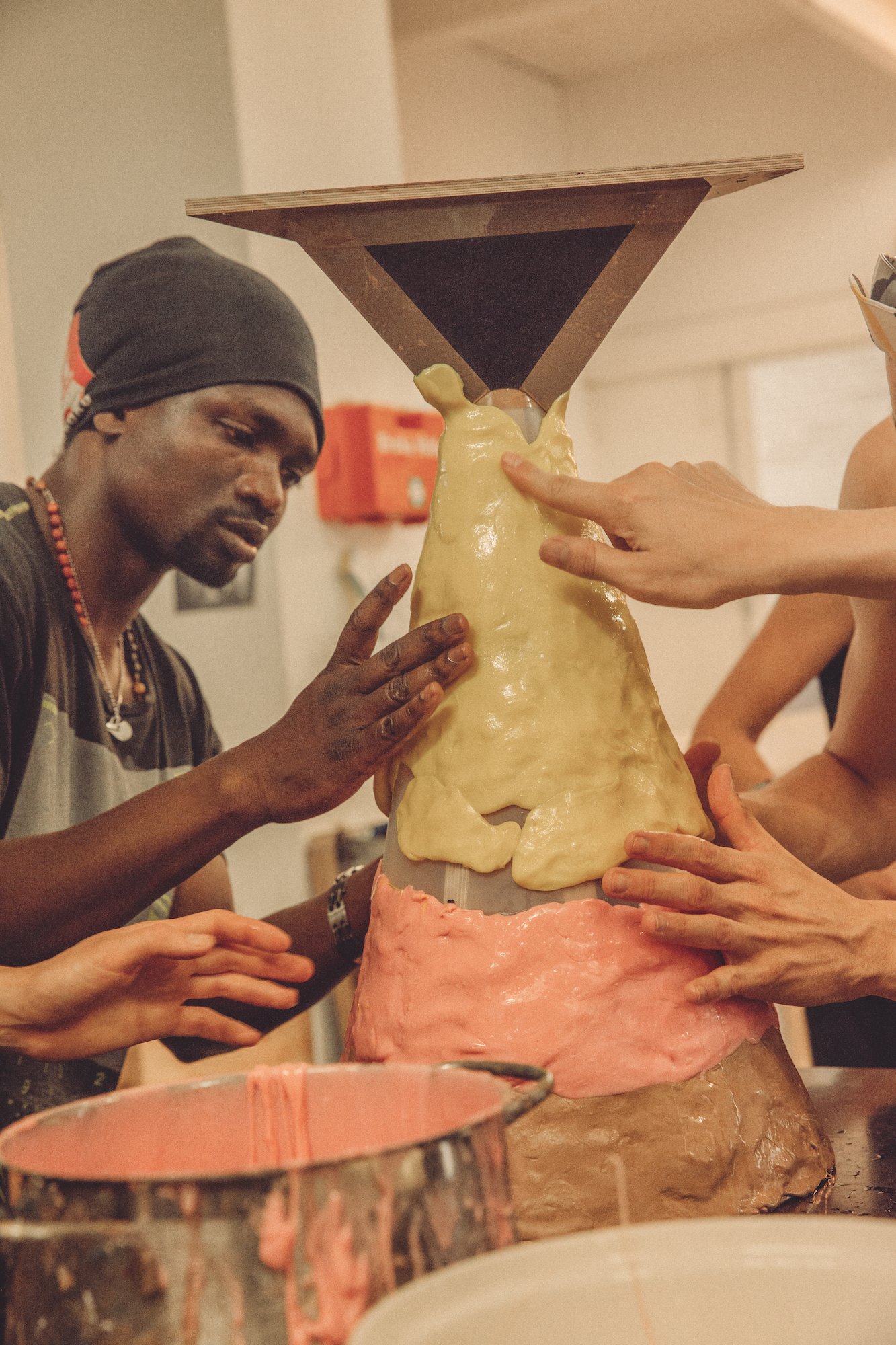
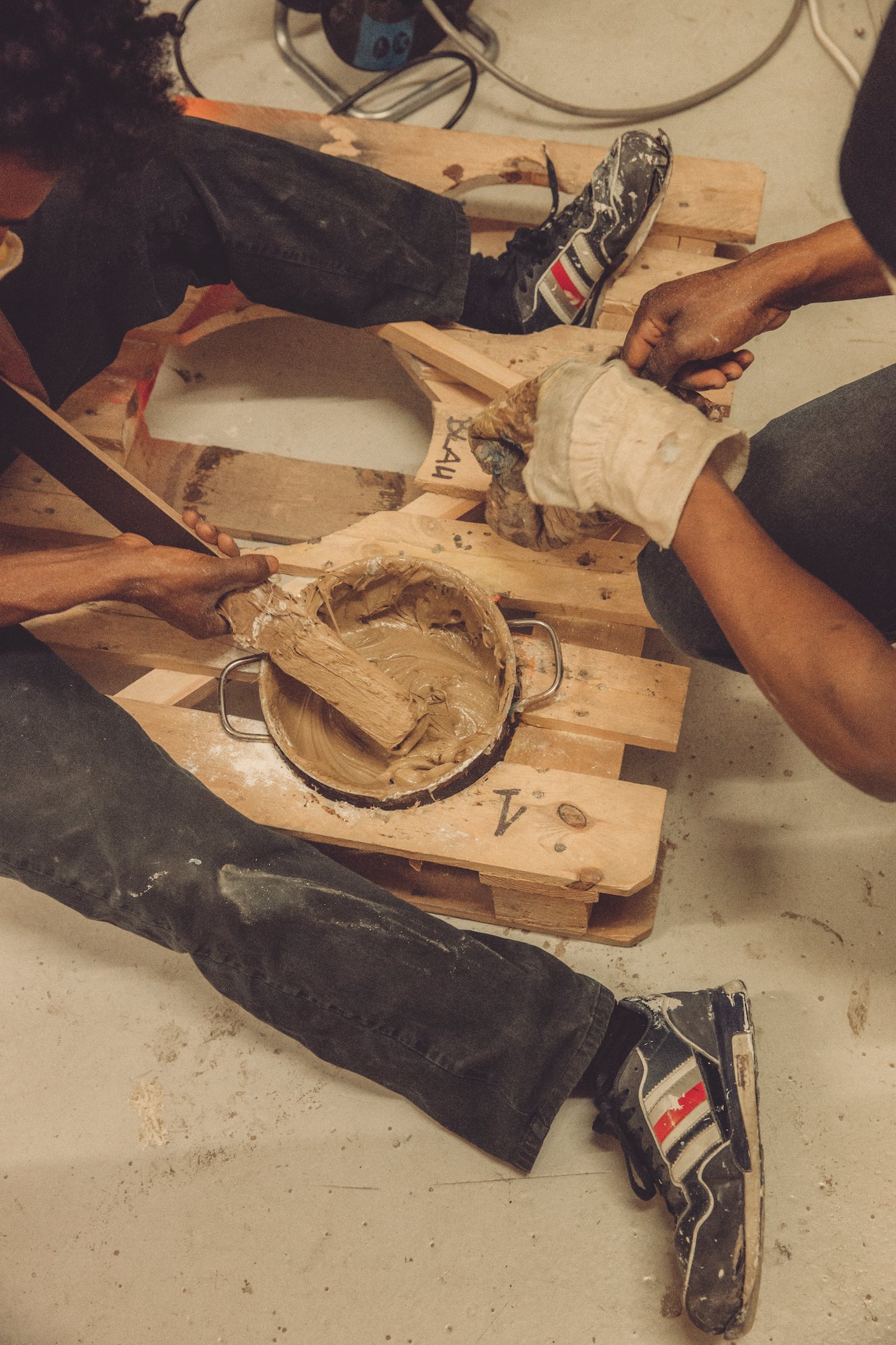
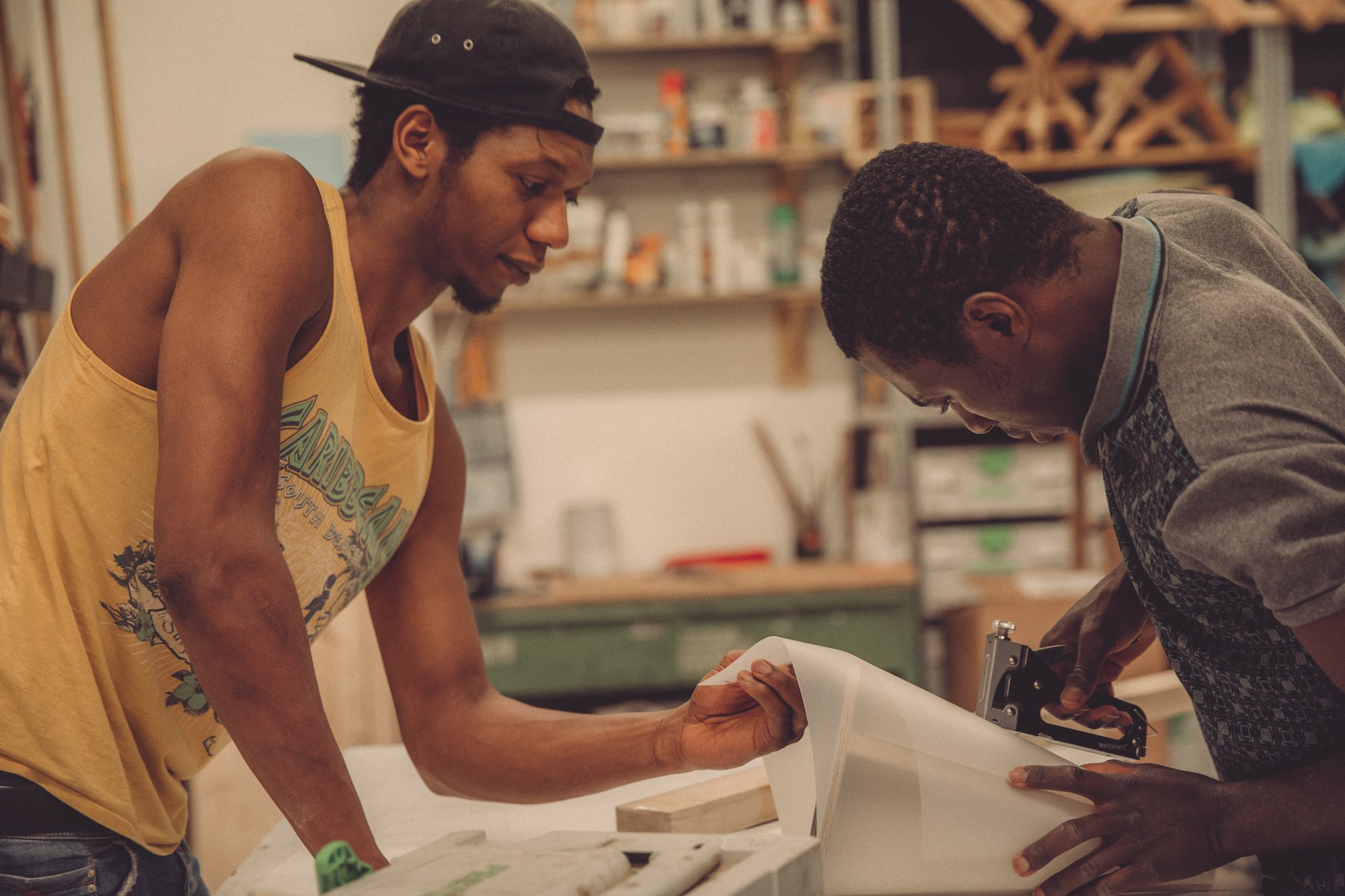
The images that accompany this article are a documentation of Cucula and a workshop led by Seymour with its participants. They offer an insight into Cucula’s process and ideas, as well as serving as an exhortation to engage with the socio-political issues that the organisation addresses. “Who are you integrating and into what? It’s difficult to create a picture of a society that everyone has to fit into,” says Sy. “I struggle with the term ‘integration’ in general. We definitely need to talk and to discuss values, habits and differences. But please – let’s really talk about it and not just use fuzzy terms. Let’s define our values.”
Words Jeannette Petrik
Photographs Jonas Holthaus
This article was originally published in Disegno #15. To buy the issue, or subscribe to the journal, please visit the online shop.

